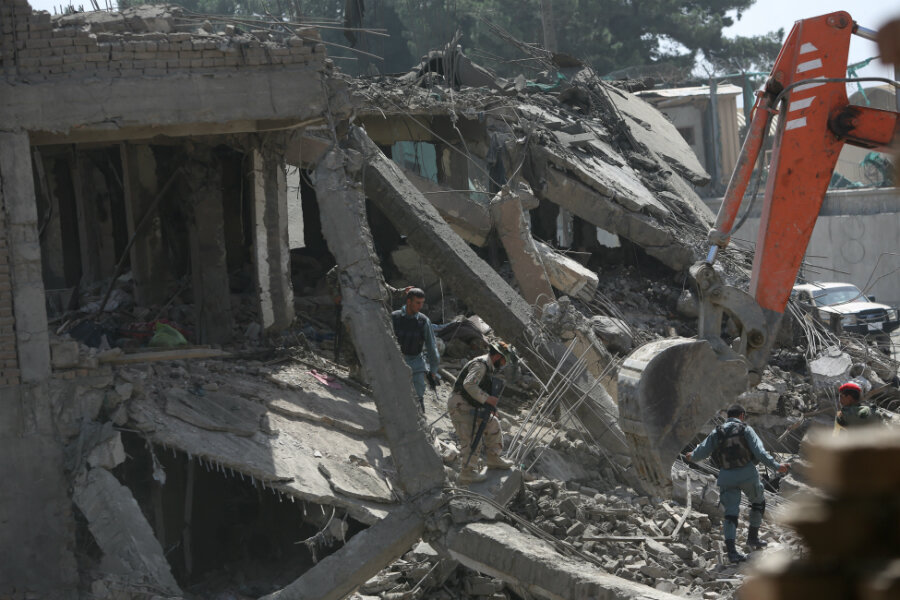Kabul attack: Afghanistan marks record year for civilian casualties
Loading...
At least eight people were killed and as many as 400 injured early Friday morning by a suicide truck bomb detonated near an Afghan Army compound in central Kabul.
The blast, strong enough to wake residents from one end of the city to the other, left a crater more than 30 feet deep, and damaged at least 50 buildings, NBC News reports. It also underscored a rising tide of violence against civilians in Afghanistan’s 14-year conflict with its Taliban insurgency.
Indeed, statistics released last week by the United Nations paint 2015 as a record year for civilian casualties in Afghanistan, with more deaths and injuries reported than any year since the start of the US-led invasion of the country in 2001. So far this year, 1,591 civilians have been killed and 3,329 injured, with a sharp rise in the number of women and children victims, reports Dawn. According to the report, 70 percent of those casualties were inflicted by insurgents — half through suicide attacks.
Friday’s truck bombing was the most powerful to hit the capital in years, with eyewitnesses describing widespread destruction across the Shah Shaheed neighborhood where the explosion occurred. As one resident described the scene to the Washington Post:
“There was a very bright light, and a very loud explosion,” said [Wali] Khan, two of whose sons were injured by shrapnel and taken to a hospital. His metal front door had been ripped off, and some of the house walls had cracked and crumbled. An interior wooden door had been ripped in half.
“People started screaming in every house, but nobody dared go outside,” he said. “If such things keep happening, we cannot say that Kabul is safe for us either.”
The attack is the first in Kabul since news emerged that the leaders of two of the country’s most powerful insurgent networks had died — possibly years before the official announcements. As the New York Times reports:
There was no immediate claim of responsibility, but huge suicide bombings targeting civilians in Kabul have been a trademark of the Haqqani network, whose leader Jalaluddin Haqqani died in December, according to American officials and a senior member of the group….
Zabihullah Mujahid, a spokesman for the Taliban, of which the Haqqani network is a part, has said that Jalaluddin Haqqani is alive. But Mr. Mujahid’s credibility has been called into question, because he long denied that Mullah Muhammad Omar, the Taliban’s main leader, was dead. Mr. Mujahid maintained those denials until shortly before the group acknowledged last week that Mullah Omar had died in early 2013.
The Kabul attack comes just one day after Taliban operatives killed nine people in attacks on police targets in southern and eastern Afghanistan. Both Thursday and Friday’s attacks underscore the Taliban’s encroaching threat to civilians as Afghan forces endure their first season fighting the insurgency without full NATO backing, after a massive foreign troop withdrawal at the end of last year.
They also come at a particularly fragile moment for potential peace talks between government and insurgents, The Wall Street Journal reports. Mr. Omar’s death and the ensuing succession conflict it triggered have stymied negotiations. A second round of peace talks — scheduled for last Friday — was cancelled after the news surfaced of the leader’s death.
Kabul, meanwhile, has seen several major insurgent attacks this year, including a June 22 attack on the National Assembly that left five civilians and seven attackers dead, and a July 7 car bomb that injured several people in a NATO convoy near the US Embassy.






